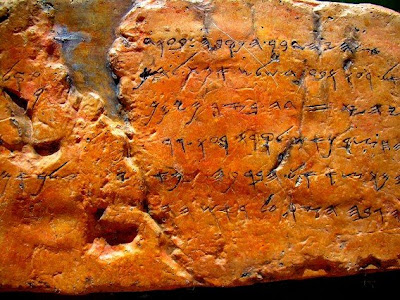
A cove on the shore of the Sea of Galilee--Lake Kineret, from the ancient Hebrew kinor, or harp, as it was thought to be so shaped. Shaped much like the anatomical heart, minus the hoses though. Jerusalem is the spirit and soul of Israel, and the Kineret, then, is the heart. The great pumps send the waters up almost 700 feet--to sea level--from this deep hole in the earth, and into the National Water Carrier and out to the rest of Israel.
Below is a composition for the Scottish Highland Bagpipe, commemorating a mountain in the Negev Desert of southern Israel which some archaeologists believe to be the true Mt Sinai. I've been composing for the pipes for many years.






